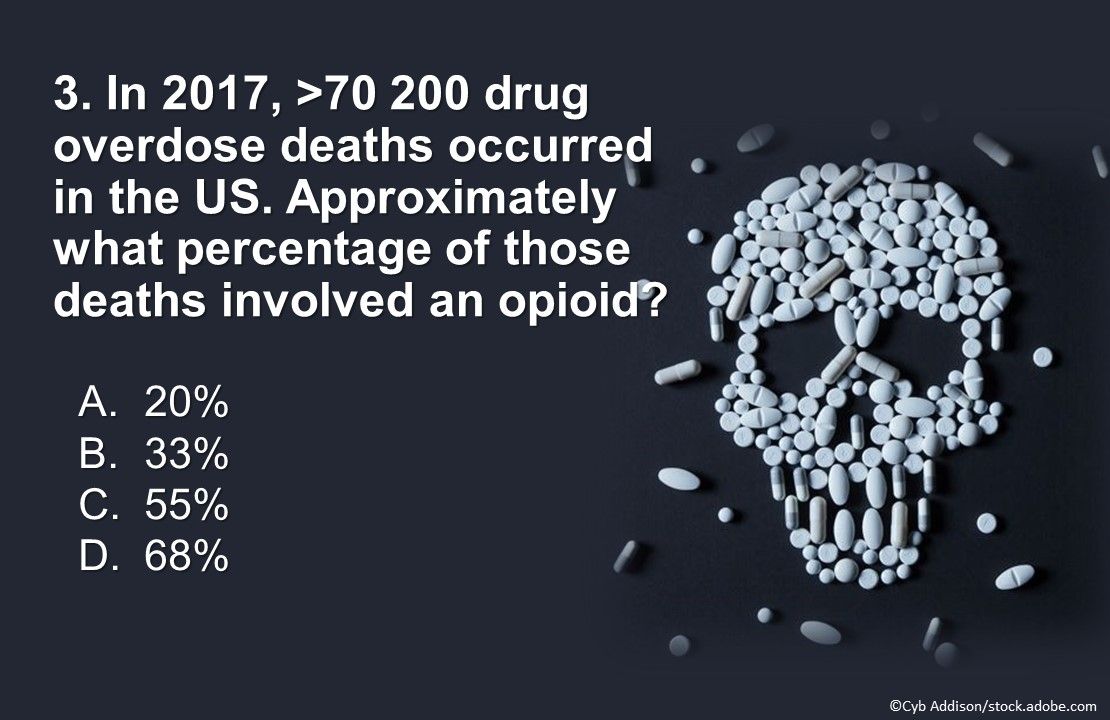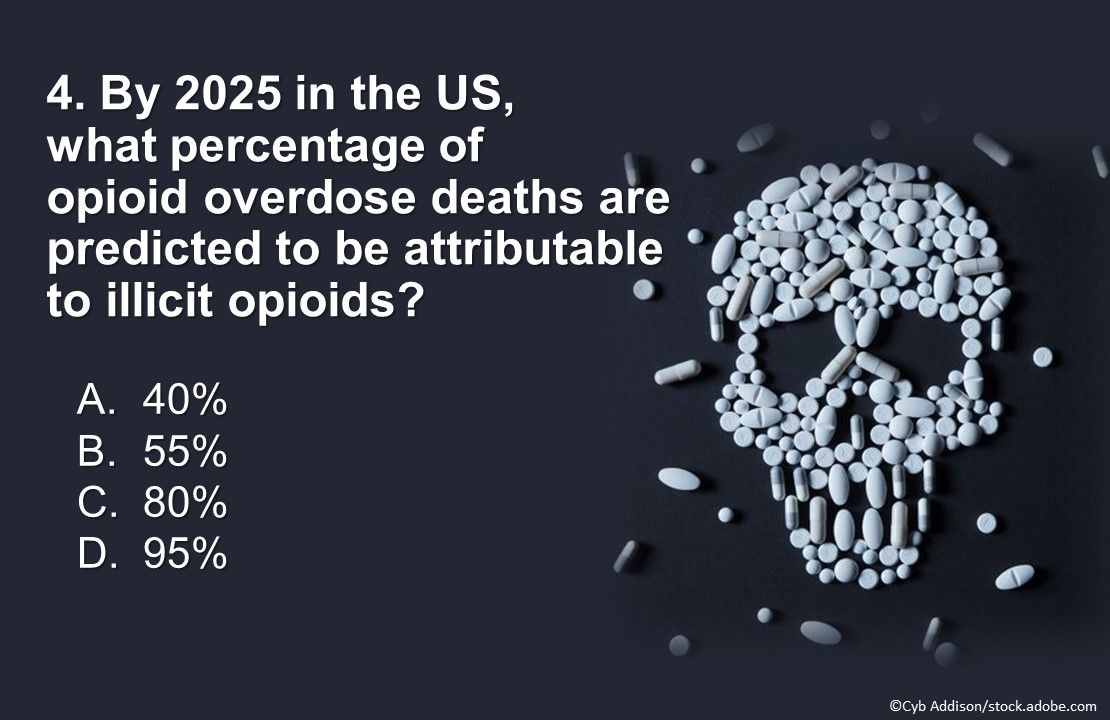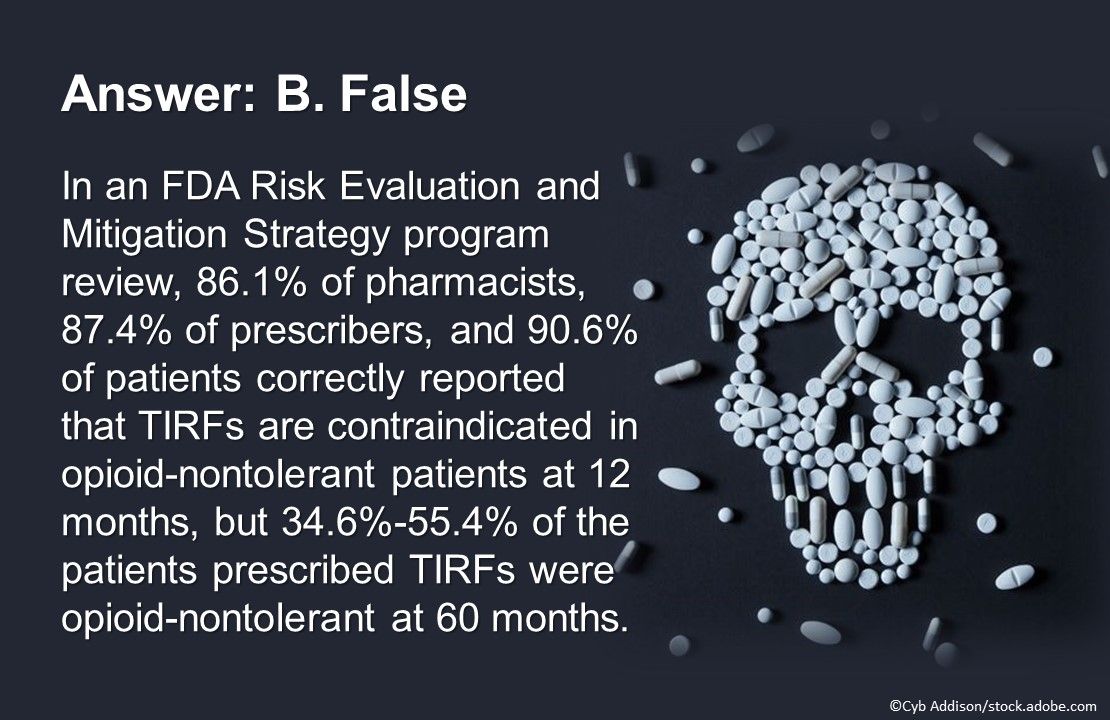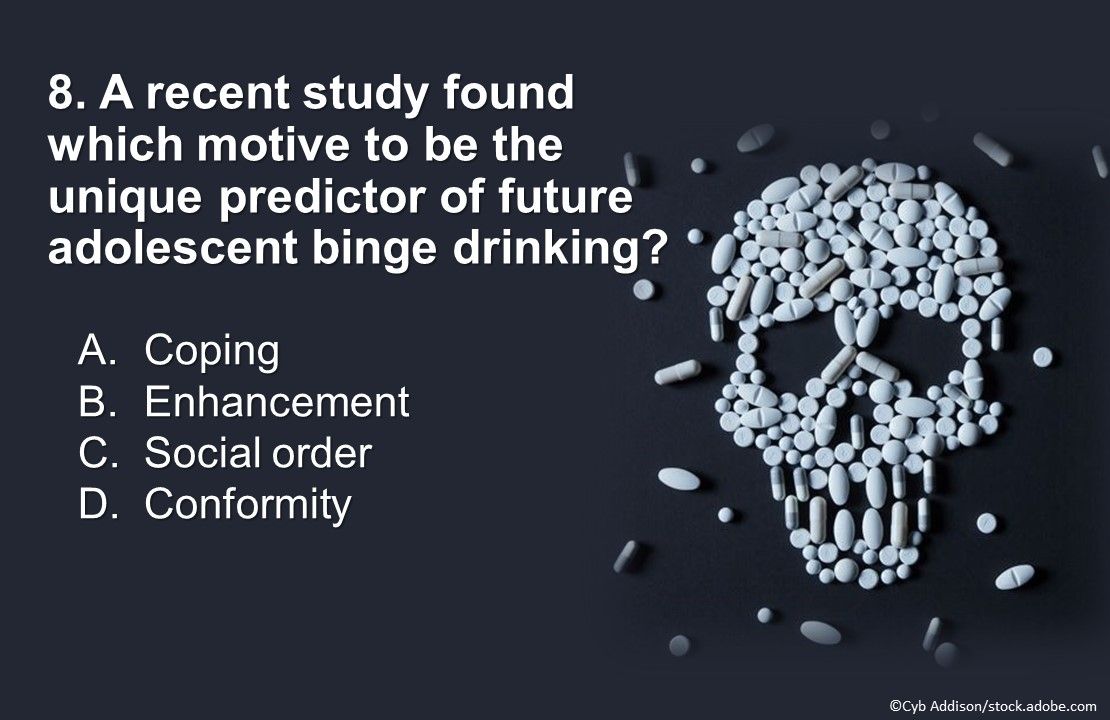© 2025 MJH Life Sciences™ , Patient Care Online – Primary Care News and Clinical Resources. All rights reserved.
Drug Use & Abuse: 10 Qs to Decipher
Sample: In 2017, >70 200 drug overdose deaths occurred in the US. Approximately what percentage of those deaths involved an opioid?

The current substance use crisis started in the 1990s with overprescription of opioid analgesics, intensified with increases in overdose deaths that involved heroin, and magnified more recently with increases in overdose deaths that involved fentanyl or other synthetic opioids.
And the use of many other substances, including alcohol, cannabis, amphetamines, and nicotine, adds to the significant potential for abuse, overdose, and death. Take this brief quiz to test your knowledge of the latest developments and research findings regarding substance use and abuse.

Answer: B. Alcohol. Alcohol use disorders were the most prevalent with ≥100 million cases; drug use disorders followed with opioid dependence (26.8 million) and cannabis dependence (22.1 million).

Answer: D. All of the above. A strong desire to take the substance, impaired control over use, and withdrawal syndrome on ceasing or reducing use are all criteria for drug dependence. Other criteria include tolerance to the drug’s effects; a disproportionate amount of time spent obtaining, using, and recovering from drug use; and continuing to take drugs even with the problems. The definition of dependence requires that at least 3 of these criteria be met.

Question 3. In 2017, >70 200 drug overdose deaths occurred in the US. Approximately what percentage of those deaths involved an opioid?

Answer: D. 68%. Approximately 68% of the >70 200 drug overdose deaths in 2017 involved an opioid and more than one-third of those opioid overdose deaths involved prescription opioids.

Question 4. By 2025 in the US, what percentage of opioid overdose deaths are predicted to be attributable to illicit opioids?

Answer: C. 80%. Close to 82 000 opioid overdose deaths are predicted to occur each year by 2025 in the US, 80% of them attributable to illicit opioids.

Question 5. True or false? Knowledge of proper prescribing of transmucosal immediate-release fentanyl (TIRF) is low, but rates of inappropriate use are high.

Answer: B. False. In an FDA Risk Evaluation and Mitigation Strategy program review, 86.1% of pharmacists, 87.4% of prescribers, and 90.6% of patients correctly reported that TIRFs are contraindicated in opioid-nontolerant patients at 12 months, but 34.6%-55.4% of the patients prescribed TIRFs were opioid-nontolerant at 60 months.

Question 6. True or false? In a phase 3 trial, extended-release buprenorphine (BUP-XR) was more effective for opioid use disorder vs placebo.

Answer: A. True. BUP-XR, a subcutaneously injected, monthly buprenorphine treatment, was shown to provide sustained buprenorphine plasma concentrations to block drug-liking of abused opioids over the monthly dosing period while controlling withdrawal and craving symptoms.

Question 7. How does the prevalence of psychotic effects compare with the use of a methamphetamine-ketamine combination vs methamphetamine alone?

Answer: C. Higher. The prevalence of psychotic disorders in methamphetamine-dependent study subjects was greater in those with occasional ketamine use and in those with ketamine abuse or dependence vs those who had not used ketamine.

Question 8. A recent study found which of the above motives to be the unique predictor of future adolescent binge drinking?

Answer: B. Enhancement. In a longitudinal study of Belgian adolescents aged 12-15 years, the search for the enjoyable sensations felt when drinking, enhancement motivation, was found to be the unique predictor of future binge drinking.

Answer: B. E-cigarettes. E-cigarettes outperformed nicotine-replacement therapy in a highly publicized study. The rate of sustained abstinence for 1 year was 18% in the e-cigarette group vs 9.9% in the nicotine-replacement group.

Question 10. What percentage of medical cannabis users in a recent study reported that they had stopped taking a pharmaceutical drug?

Answer: C. 42%. In a recent University of Michigan study, 42% of medical cannabis patients said they stopped taking pharmaceutical drugs. In addition, 38% reported less drug use with the medical use of cannabis and 30% reported that their mainstream healthcare provider did not know they used medical cannabis.






